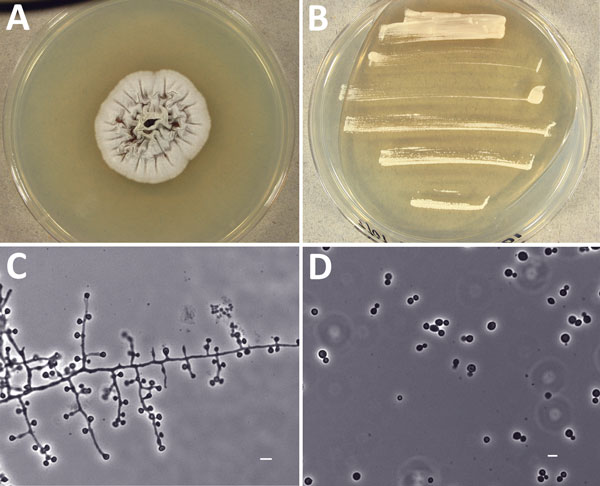Volume 24, Number 4—April 2018
Dispatch
Emergomyces canadensis, a Dimorphic Fungus Causing Fatal Systemic Human Disease in North America
Figure 2

Figure 2. Morphologic features of novel fungal species Emergomyces canadensis isolated from case-patient 2, Saskatoon, Saskatchewan, Canada, 2003. A–B) Colonies grown on potato dextrose agar showing mold phase after 28 days at 30°C (A) and yeast phase after 9 days at 35°C (B). C) Mycelial phase showing 1–3 conidia borne at the ends of slightly swollen conidiophores or sessile on hyphae. D) Round to oval yeast cells with narrow-based budding produced at 35°C. Scale bars indicate 5 µm.
Page created: March 19, 2018
Page updated: March 19, 2018
Page reviewed: March 19, 2018
The conclusions, findings, and opinions expressed by authors contributing to this journal do not necessarily reflect the official position of the U.S. Department of Health and Human Services, the Public Health Service, the Centers for Disease Control and Prevention, or the authors' affiliated institutions. Use of trade names is for identification only and does not imply endorsement by any of the groups named above.